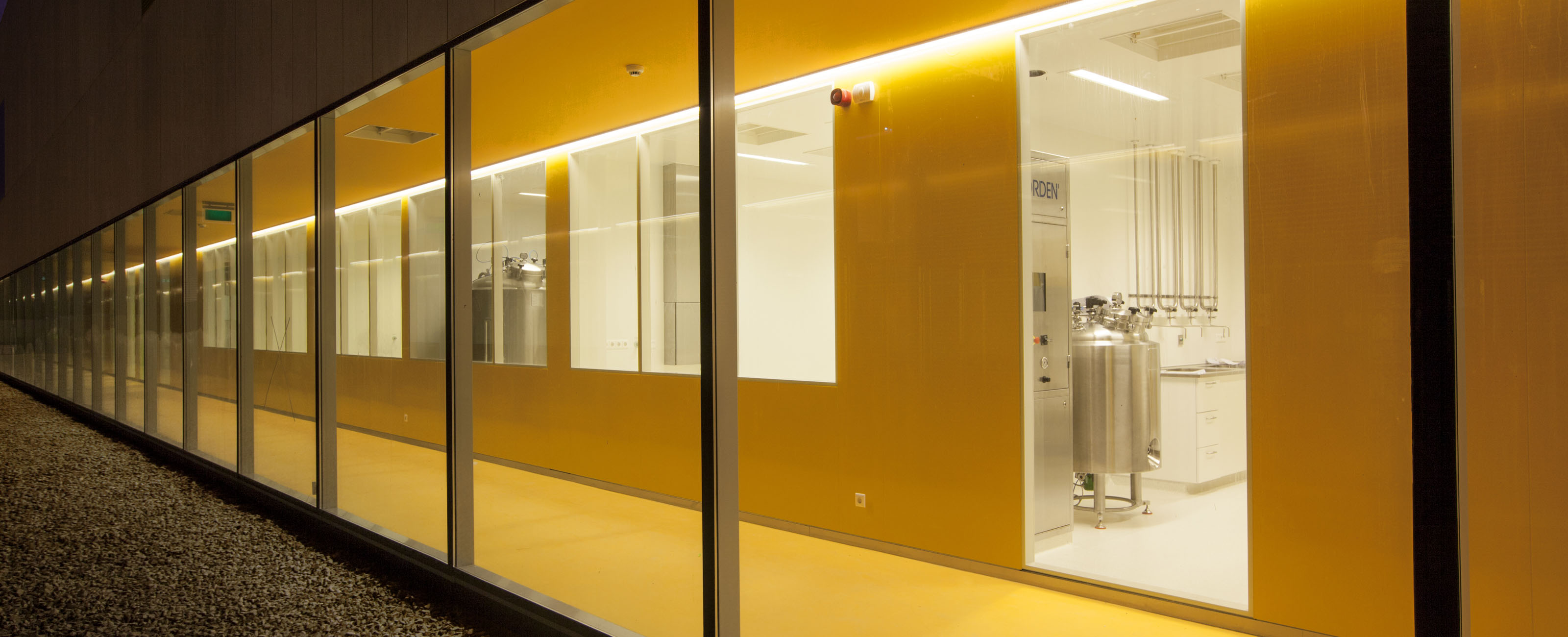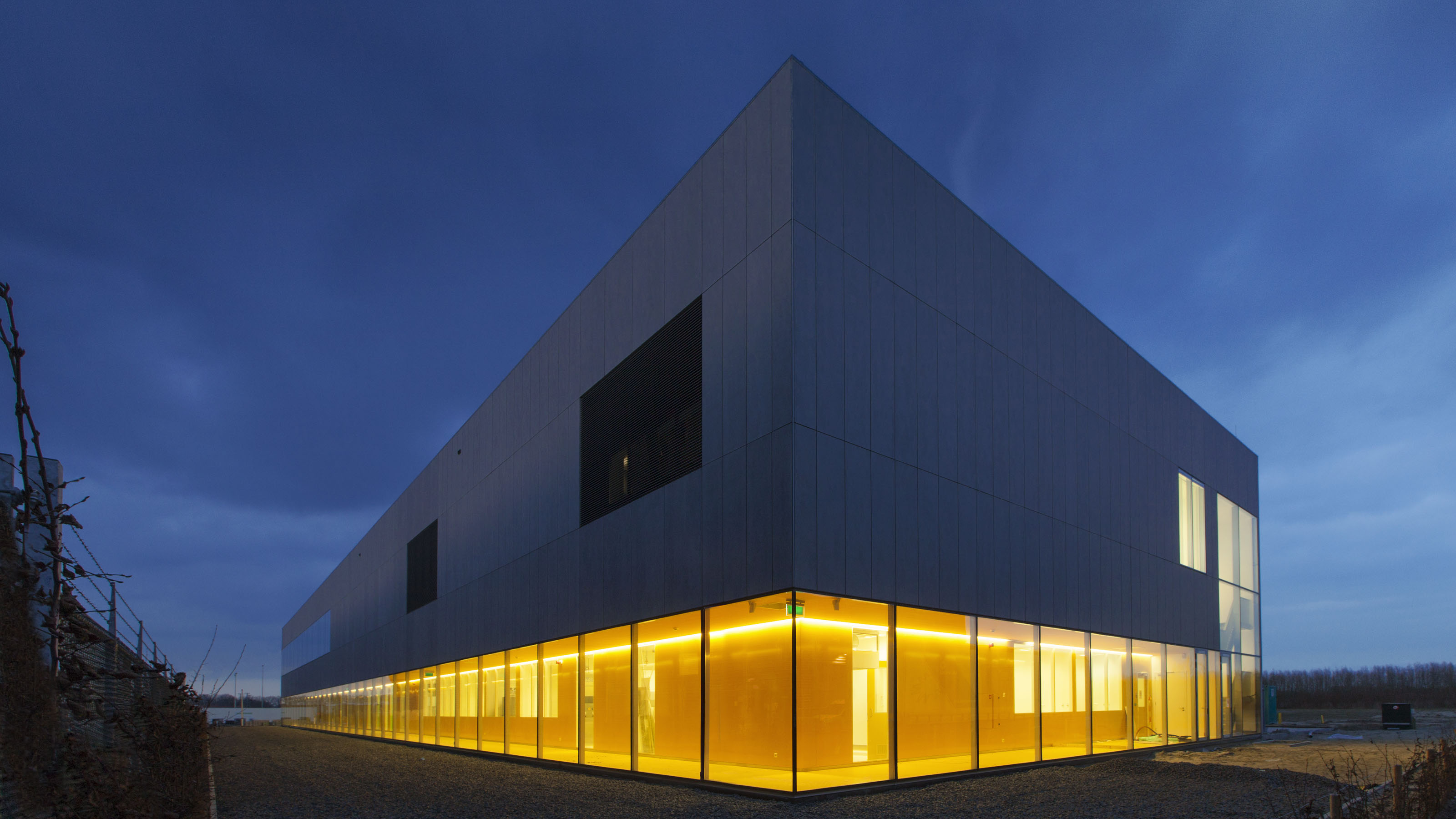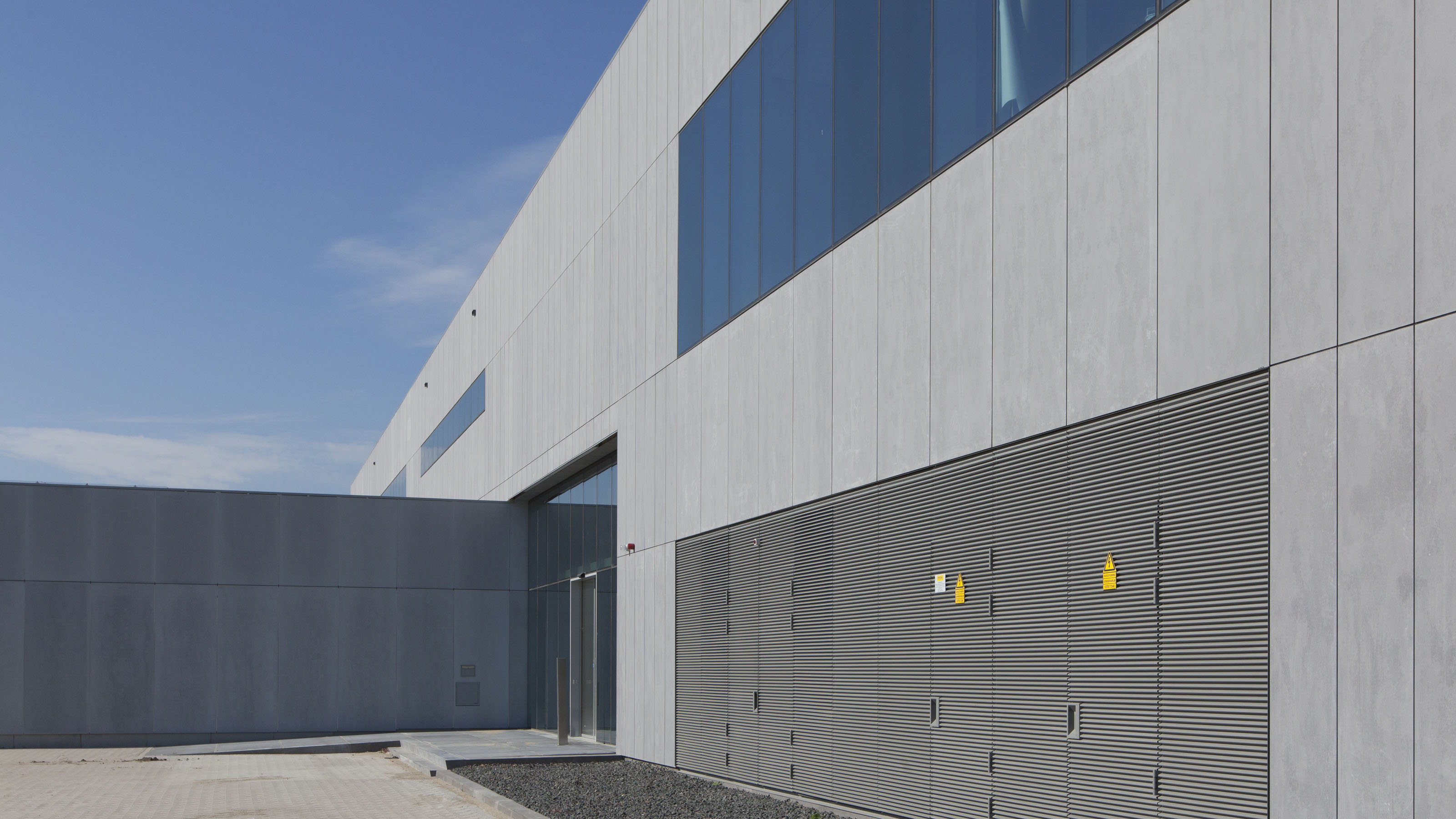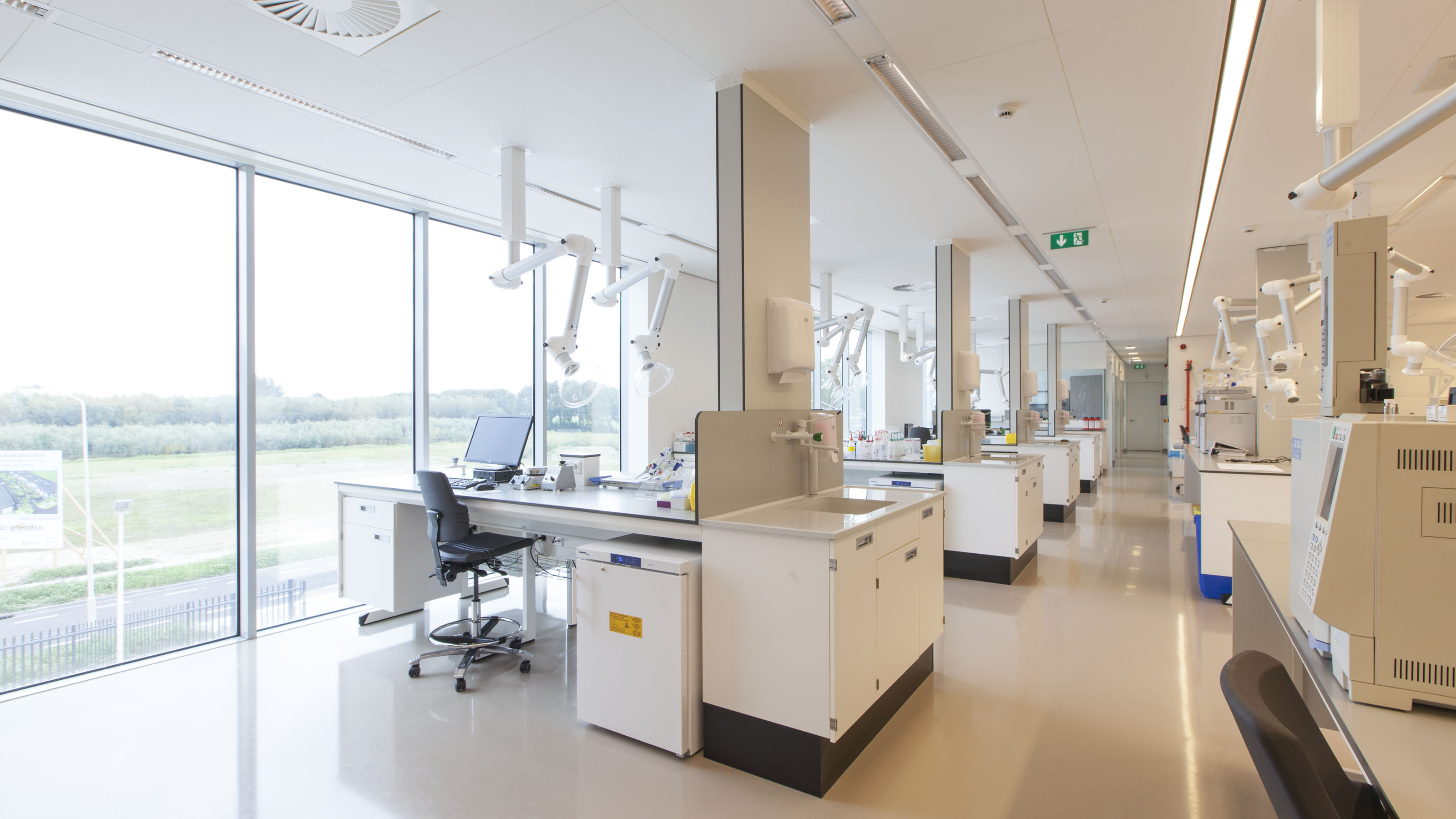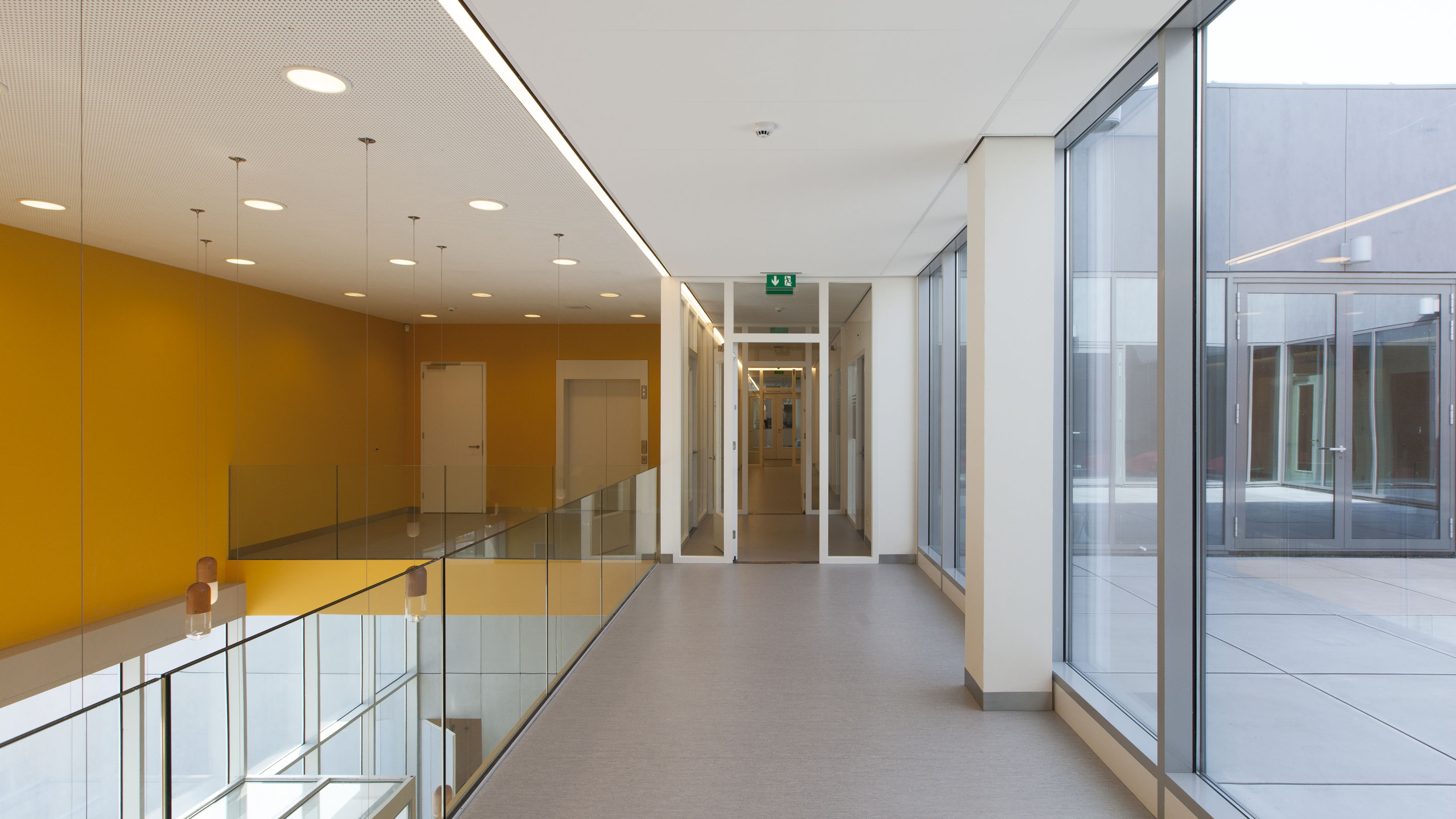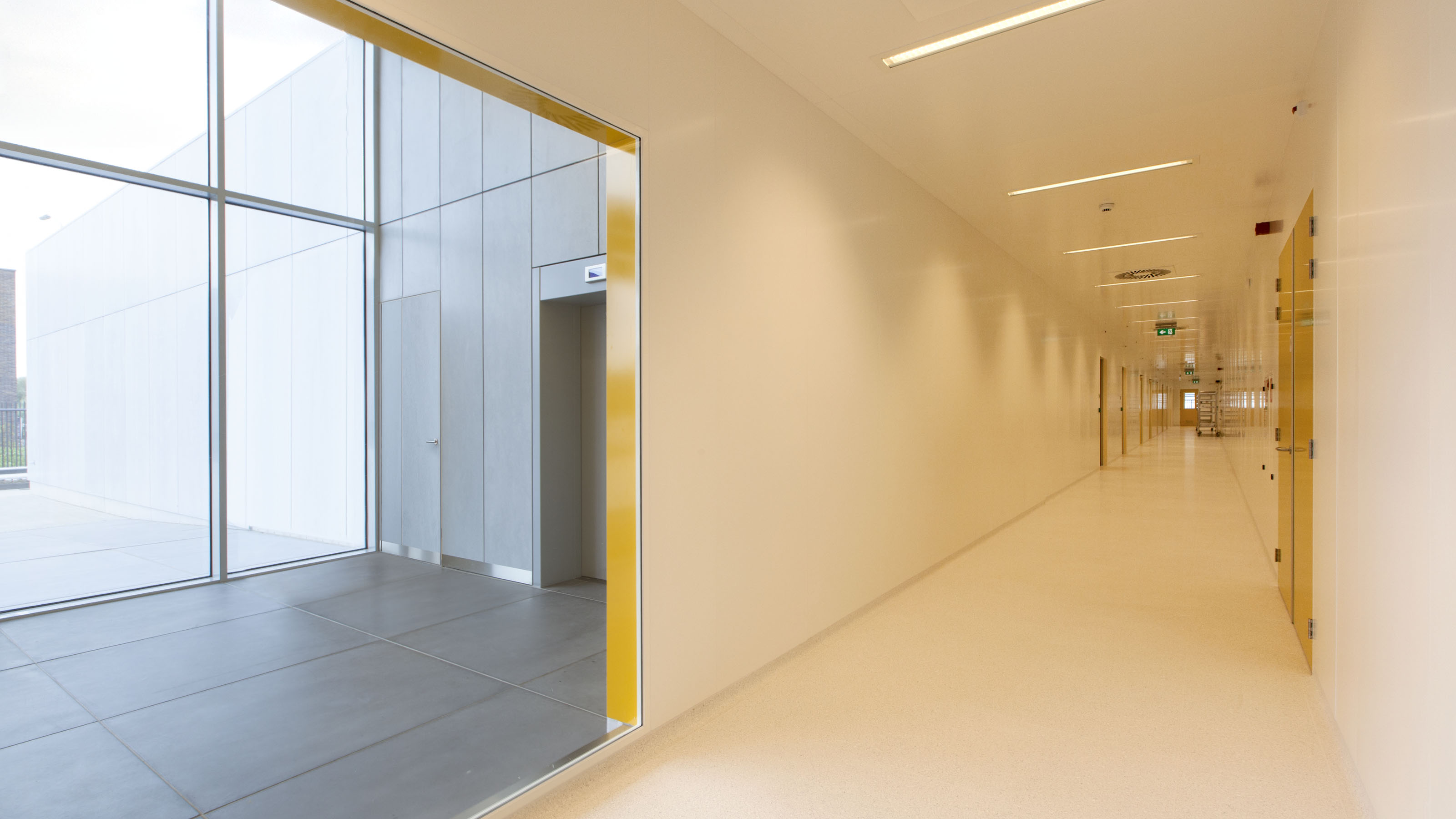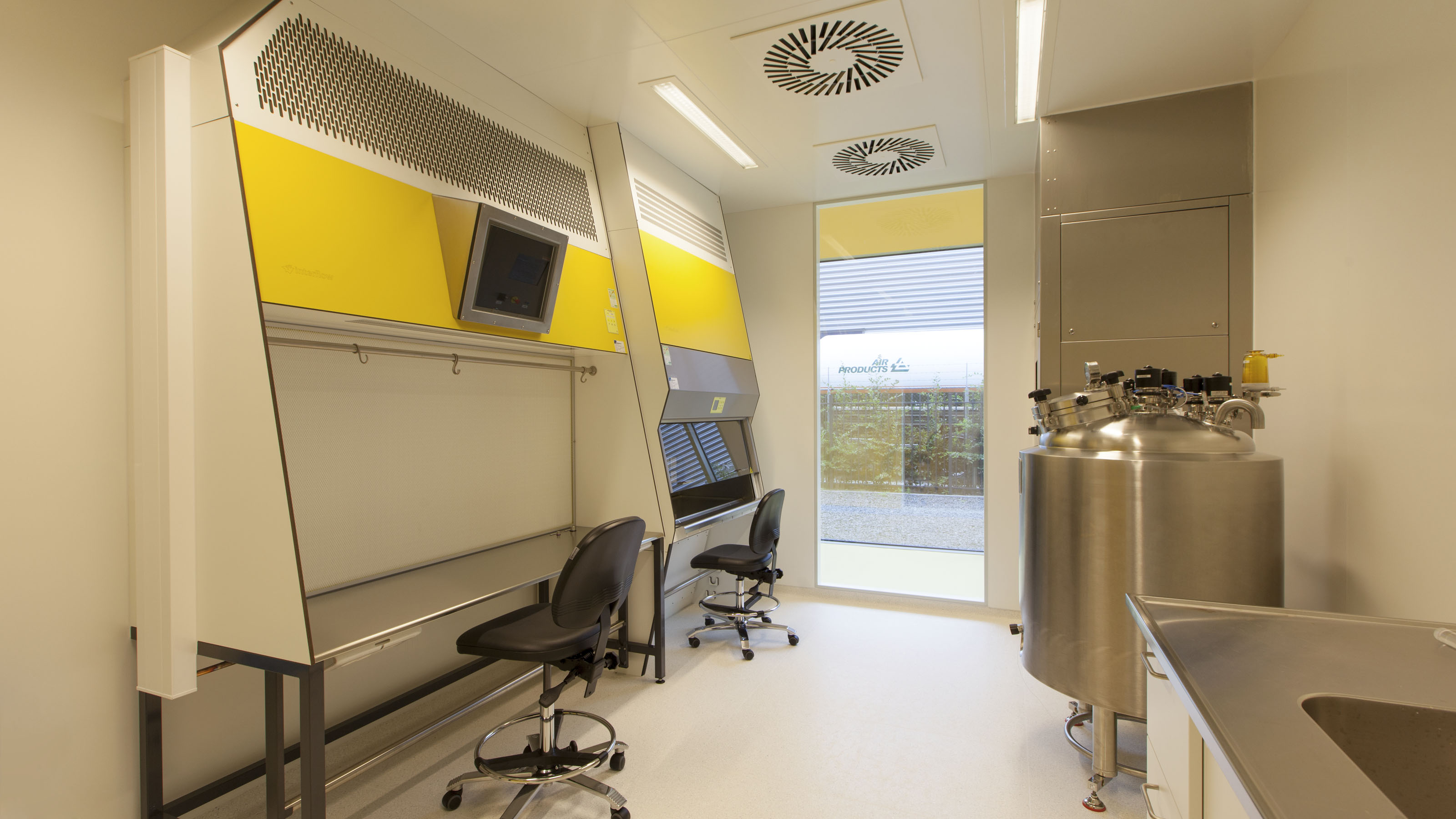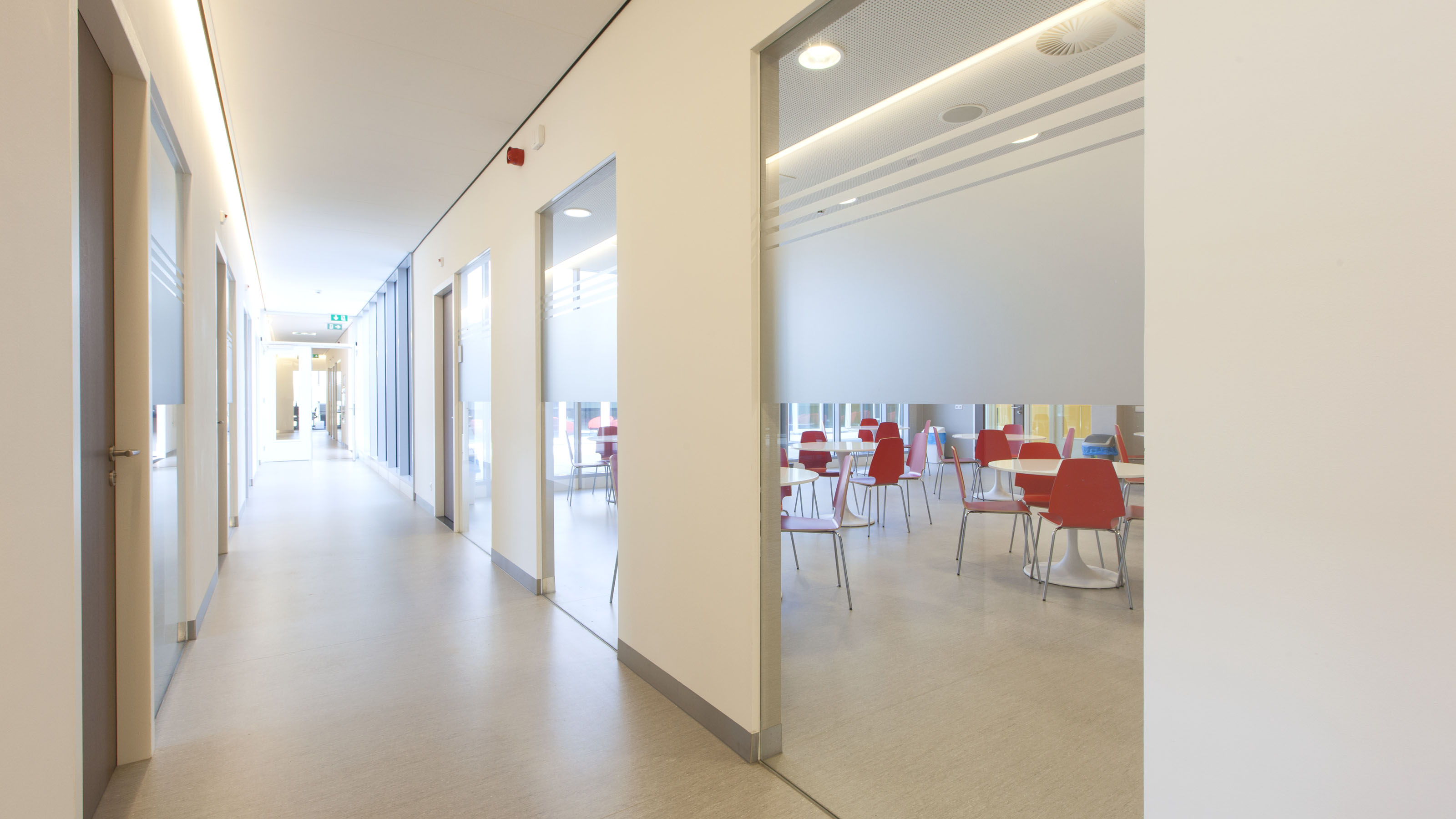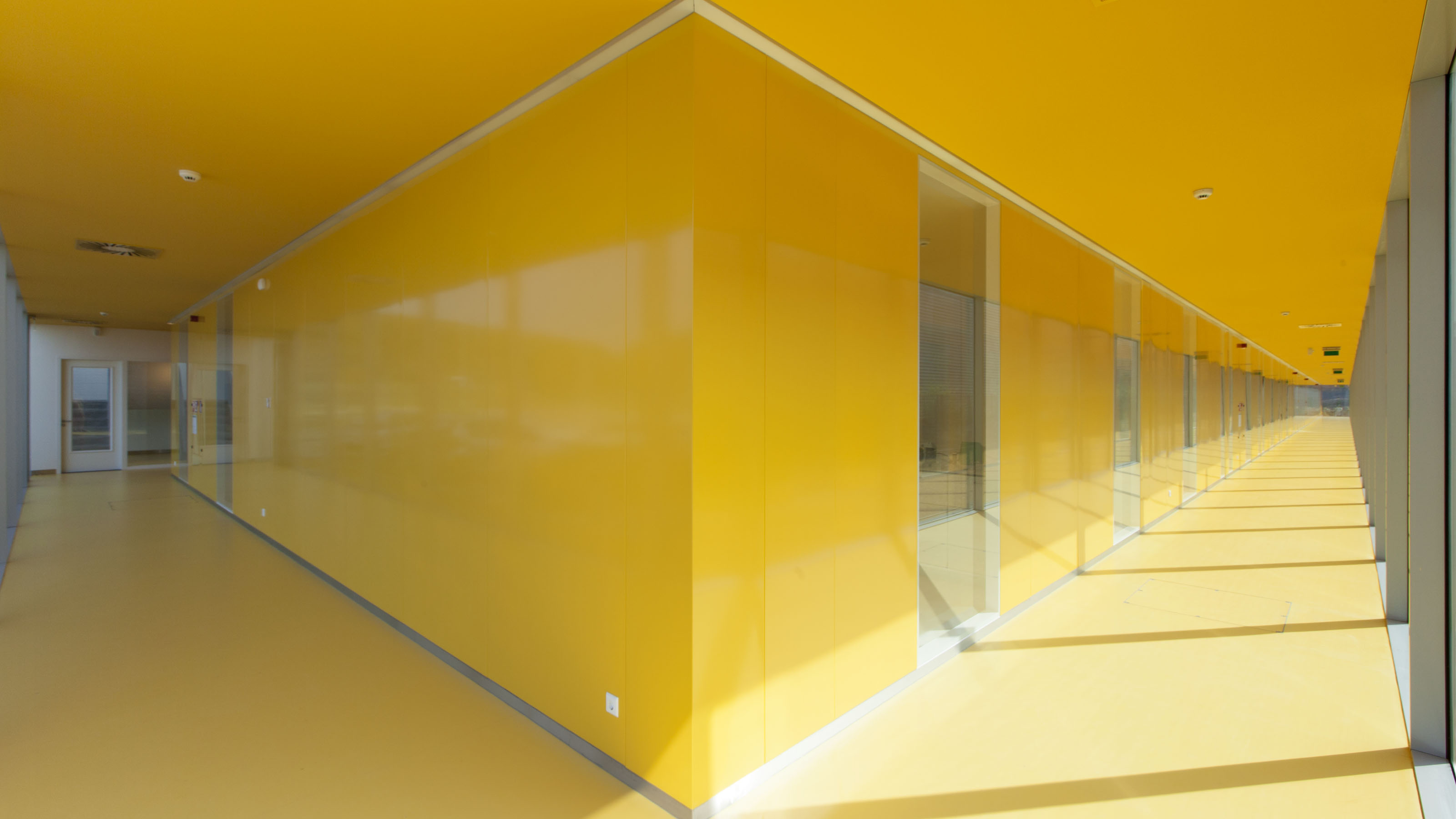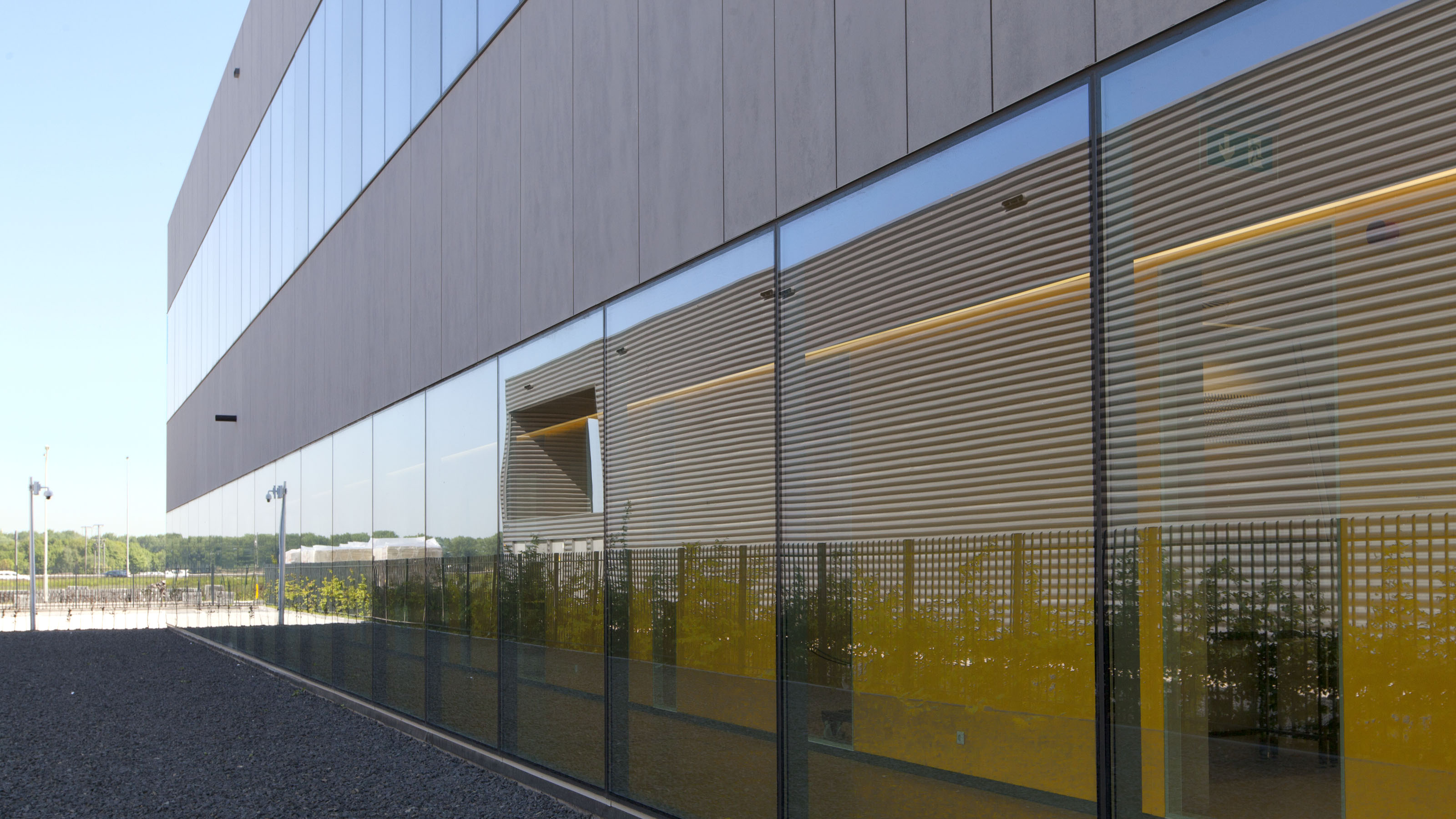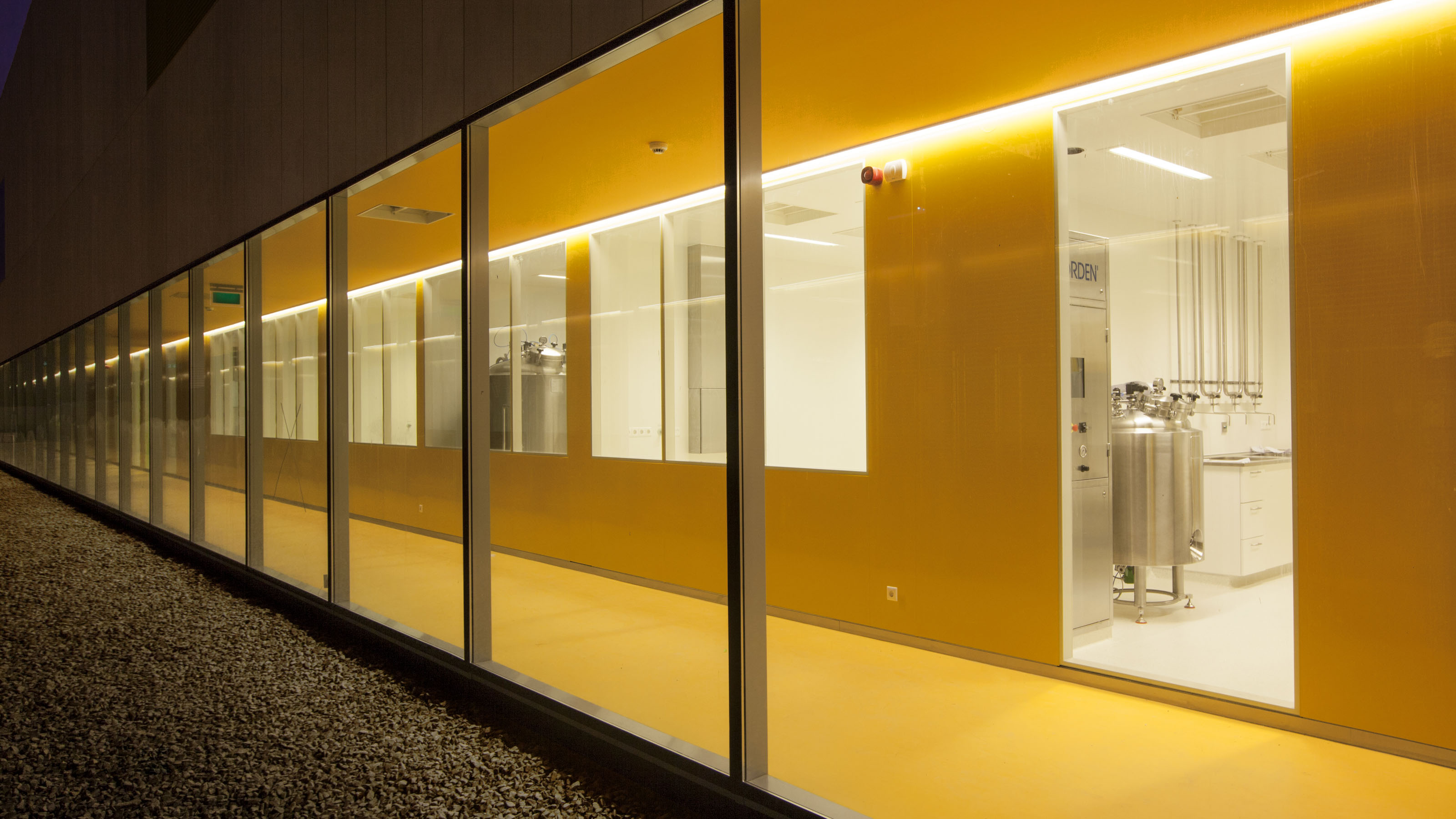A building with a central logistical location and functional structure with cleanrooms
The Pharmacy A15 is the largest manufacturing pharmacy in the Netherlands. Custom medications for specific patient groups are produced here. The building is designed according to a box-within-a-box principle, ensuring optimal protection of hygiene and safety. Mutual cooperation facilitated a swift design and construction process.
View the entire projectAt a central location along the A15 motorway in the city of Gorinchem, the Erasmus MC has realised the largest manufacturing pharmacy in the Netherlands. Custom medications for specific patient groups not commercially available are prepared and produced here. Some of the many advantages of the mega-pharmacy are shared costs through cooperation, modern production facilities and enhanced expertise. This allows the Erasmus MC to keep pace with future developments in the pharmaceutical industry.
Centralisation
Choosing a location that is set apart from the hospital is in line with the national trend of centralising specialised medical facilities. The pharmacy produces approximately 500,000 units of medicine per year for the Erasmus MC and other hospitals.
Rapid development
During the development of the new building of the Erasmus MC, it became apparent that although the manufacturing pharmacy would not operate from the central location, it would nevertheless require security of supply. Therefore, the Erasmus MC would need to realise a separate facility in a short period of time. This was made possible by strong mutual cooperation. The Building Information Model (BIM) was utilised for this process, keeping potential costs of failure and design faults to a minimum and enabling the most efficient technical and architectural realisation of the construction possible.
The box-within-a-box principle
The pharmacy covers a gross floor area of 4,300 square metres with half of the area comprised of production rooms and cleanrooms. The other half contains offices, laboratories, storage rooms and technical rooms. Particularly strict requirements were imposed for the cleanrooms concerning hygiene, cleanliness of materials, and air purity. In order to meet these requirements as closely as possible, the box-within-a-box principle was utilised. A boundary space is created by forming a circulation corridor and walkable ceiling between the cleanrooms and the rest of the building. Repairs and maintenance work can be carried out without having to enter the cleanrooms and disturbing the production process. This ensures optimal hygiene and safety conditions.
Functionality and architecture
The building’s narrow construction site and specific production process led to an elongated design with a clear functional structure. Large glass surfaces, wide corridors and long sightlines stimulate communication and interaction between colleagues. The smooth and flat facade of the abstract design reflects the sterile technological process that is taking place inside. The building demonstrates how compatible functionality and architecture can be.
Awards
BBH Building Better Healthcare Award 2014 - Highly Commended - Best International Design
